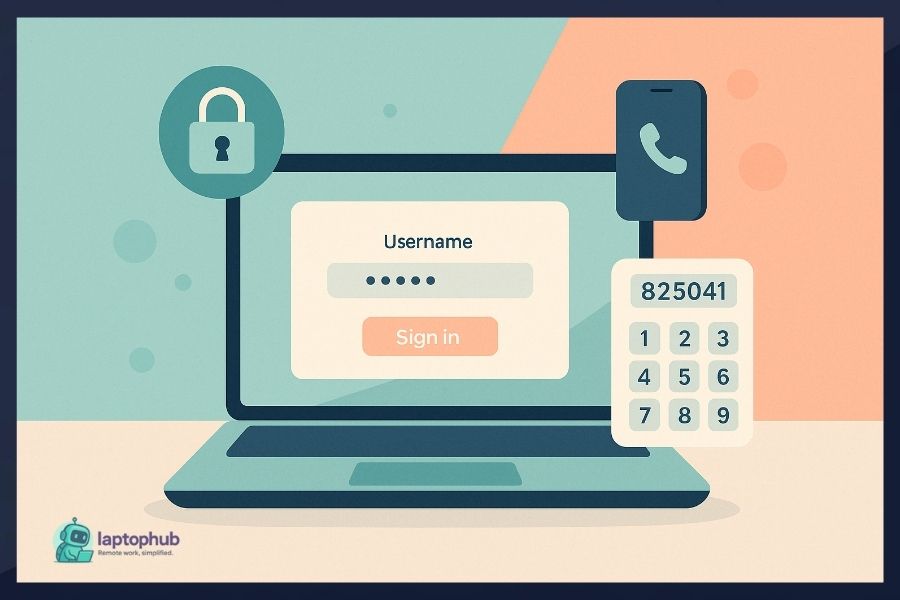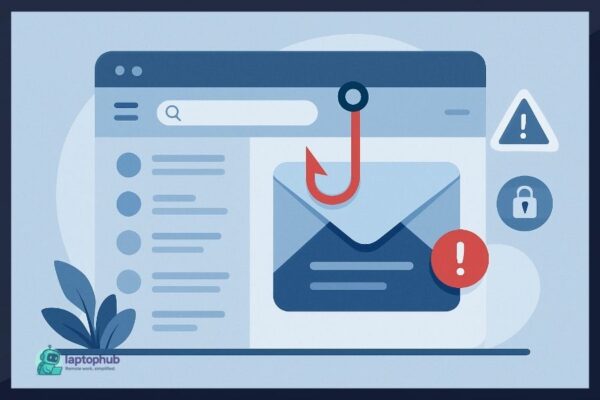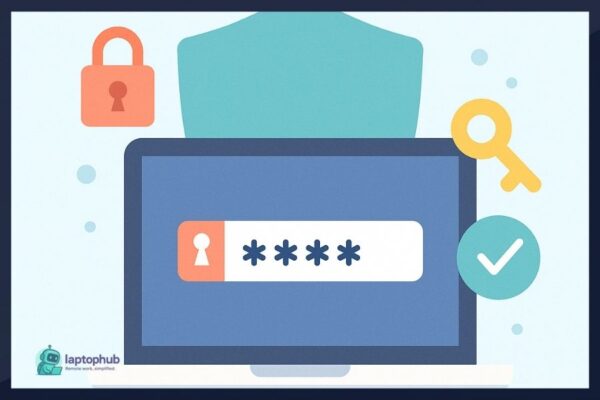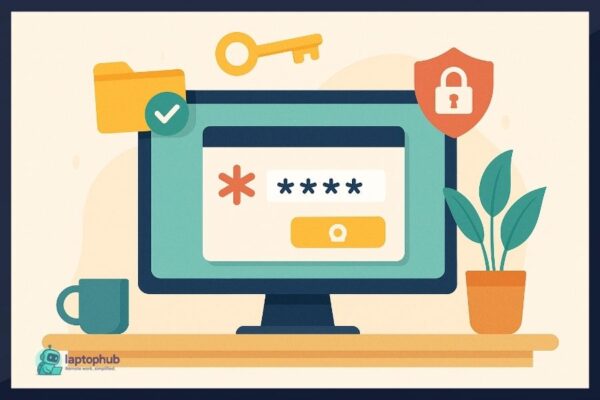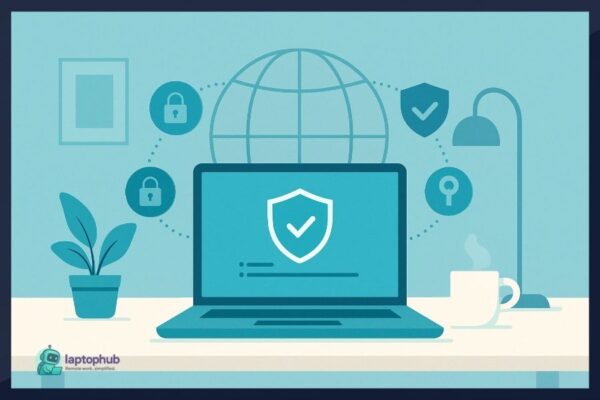Every login your remote team makes could be a doorway for cybercriminals—and most businesses don’t realize how wide open those doors are. With employees scattered across locations and using personal devices on unsecured networks, your security perimeter has all but vanished. Two-factor authentication in remote work isn’t just a precaution—it’s a critical safeguard that protects your company from password-based attacks, phishing, and unauthorized access. Without it, both your company and your personal data are at serious risk.
Let’s break down why 2FA is non-negotiable in a remote work environment, what happens when it’s ignored, and how to implement it right.

- Two-factor authentication (2FA) significantly reduces the risk of cyberattacks in remote work environments.
- Remote work increases exposure to threats like phishing, weak passwords, and unsecured networks—2FA is a critical defense.
- 2FA is easy to implement, cost-effective, and often required for compliance and cyber insurance.
- Businesses that fail to use 2FA risk data breaches, client distrust, non-compliance penalties, and financial losses.
What Is 2FA, Really?
2FA (two-factor authentication) is an extra layer of security that requires users to provide two forms of identity before accessing an account. The most common pairing is:
- Something you know – a password
- Something you have – a phone or a security app
Even if an attacker steals your password, they can’t log in unless they also have access to your second factor.
Common Types of 2FA
To get a clearer picture, here are the most widely used types of two-factor authentication:
- SMS Codes: One-time codes sent via text message
- Authenticator Apps: Apps like Google Authenticator, Authy, Microsoft Authenticator
- Push Notifications: Approval request sent to your phone (Duo, Okta Verify)
- Hardware Tokens: Physical devices like YubiKeys or RSA tokens
- Biometric Verification: Fingerprint or facial recognition (on devices that support it)
Each method has its pros and cons. But almost any 2FA method is better than none at all.
Why 2FA Matters More in Remote Work
1. Remote Teams Widen the Attack Surface
In an office, employees connect through secure networks and monitored devices. Working from home? They’re logging in from unpatched personal laptops, public Wi-Fi, or shared computers.
Every endpoint outside your perimeter is a potential entry point for an attacker. 2FA adds a critical barrier, no matter where your team is logging in from.
2. Stolen Credentials Are Everywhere
Billions of usernames and passwords have been leaked online. Sites like HaveIBeenPwned.com show just how widespread this problem is.
If your remote worker reuses the same password on multiple accounts—say Gmail and your project management tool—you’re at risk. 2FA reduces the chances that stolen credentials can be used to access sensitive company data.
3. Phishing Isn’t Just a Corporate Problem
Phishing is getting more sophisticated, especially with AI-generated emails. Remote workers, relying heavily on email and Slack, are easier targets. A convincing email that mimics your HR department or IT support can trick even tech-savvy employees.
With 2FA in place, even a successful phishing attack often fails to result in a breach.

Consequences of Skipping 2FA
Here’s what can happen when 2FA isn’t enforced:
- Account Takeovers: Hackers gain full access to cloud platforms, email inboxes, and customer data.
- Business Disruption: Stolen credentials can be used to lock you out of your own systems.
- Client Trust Erodes: A single breach can destroy your reputation—especially if customer data is involved.
- Non-Compliance Fines: Depending on your industry, you may be violating security standards or data protection laws.
- Insurance Denials: Some cyber insurance policies won’t pay out if 2FA wasn’t enabled.
The bottom line? Not using 2FA is a liability.
Addressing the Pushback: Why Some Teams Resist 2FA
Despite the benefits, some companies still hesitate. Here are common objections—and why they don’t hold up.
“It’s Too Complicated”
It’s not. Modern 2FA tools are designed for non-technical users. With push notification apps like Duo or Okta, verifying a login takes just a tap.
“It Slows Down Productivity”
The delay is minimal—seconds at most. And it’s a small price to pay compared to the time lost responding to a breach or recovering from ransomware.
“We’re Too Small to Be a Target”
Attackers don’t just go after big corporations. In fact, small businesses and startups are frequent targets precisely because they’re less likely to have robust security in place.
How to Roll Out 2FA Across a Remote Team
A successful 2FA rollout doesn’t happen by accident. Here’s a step-by-step guide to doing it right.
1. Create a Policy and Make It Mandatory
Draft a clear internal policy that outlines which apps and platforms require 2FA. Make it non-optional for every employee, contractor, and freelancer.
2. Start with Critical Tools
Prioritize the systems that hold sensitive data:
- Email (Google Workspace, Microsoft 365)
- Project management tools (Asana, Trello, Jira)
- File storage (Dropbox, OneDrive, Google Drive)
- Communication (Slack, Zoom, Teams)
- Any customer or financial data platforms
3. Use Single Sign-On (SSO) Where Possible
SSO with enforced 2FA makes login simpler while still secure. Employees sign in once to access multiple tools through one authentication flow.
4. Educate Your Team
Host a short training session or provide clear documentation. Explain what 2FA is, how to set it up, and why it protects them as well as the company.
5. Offer Support for Setup
Some employees may struggle with the tech side. Offer IT help or office hours to walk people through it.
6. Audit Regularly
Make sure 2FA is enabled and being used. Many platforms provide admin dashboards where you can check compliance.
Bonus: 2FA and Zero Trust Go Hand-in-Hand
If your company is moving toward a Zero Trust security model, 2FA is a cornerstone. Zero Trust means assuming no user or device is trustworthy by default—even if they’re on the inside.
2FA enforces this by requiring identity verification every time someone tries to access your systems, regardless of location.
2FA authentication in remote work FAQs
1. What is two-factor authentication (2FA)?
2FA is a security method that requires two forms of verification—usually a password and a secondary device or app—to access an account.
2. Why is 2FA important for remote teams?
Remote work expands the number of access points and security risks; 2FA drastically reduces the chances of unauthorized access.
3. Is SMS-based 2FA secure enough?
SMS 2FA is better than nothing, but it’s vulnerable to SIM-swapping; authenticator apps or hardware keys are more secure.
4. Does 2FA affect productivity?
Not significantly—most verification takes just seconds and saves far more time than recovering from a security breach.
5. What tools support 2FA?
Most major platforms—Google Workspace, Microsoft 365, Slack, Dropbox, and others—support 2FA natively, often at no extra cost.
Final Thoughts
If your team works remotely—even part-time—2FA isn’t just a smart idea. It’s a non-negotiable part of modern cybersecurity.
It’s cheap and it’s easy. And it can stop 99% of account breaches, according to Google’s internal research.
You wouldn’t leave your office door unlocked. Don’t leave your digital front door open either.
Make 2FA mandatory, everywhere, today.

